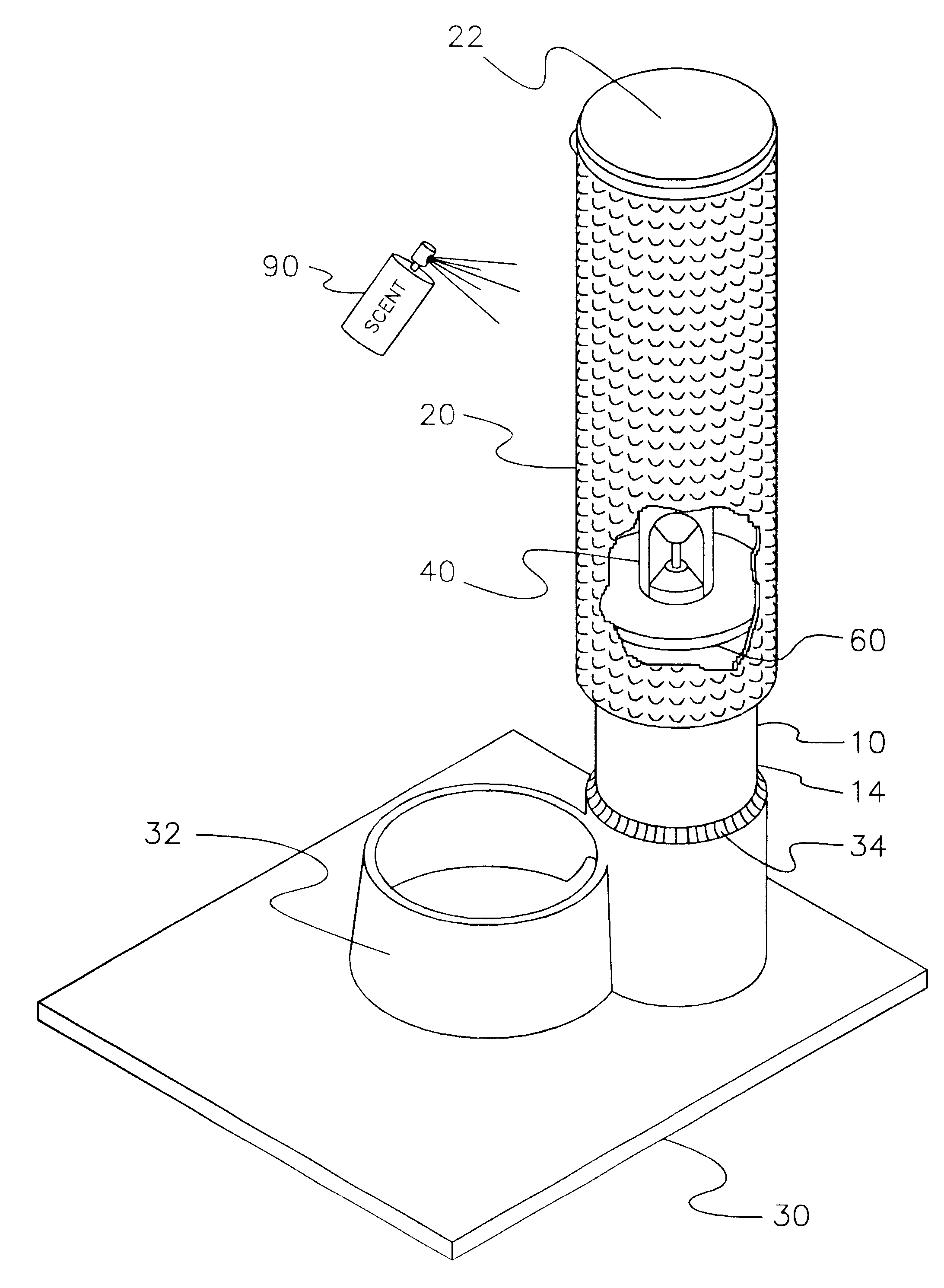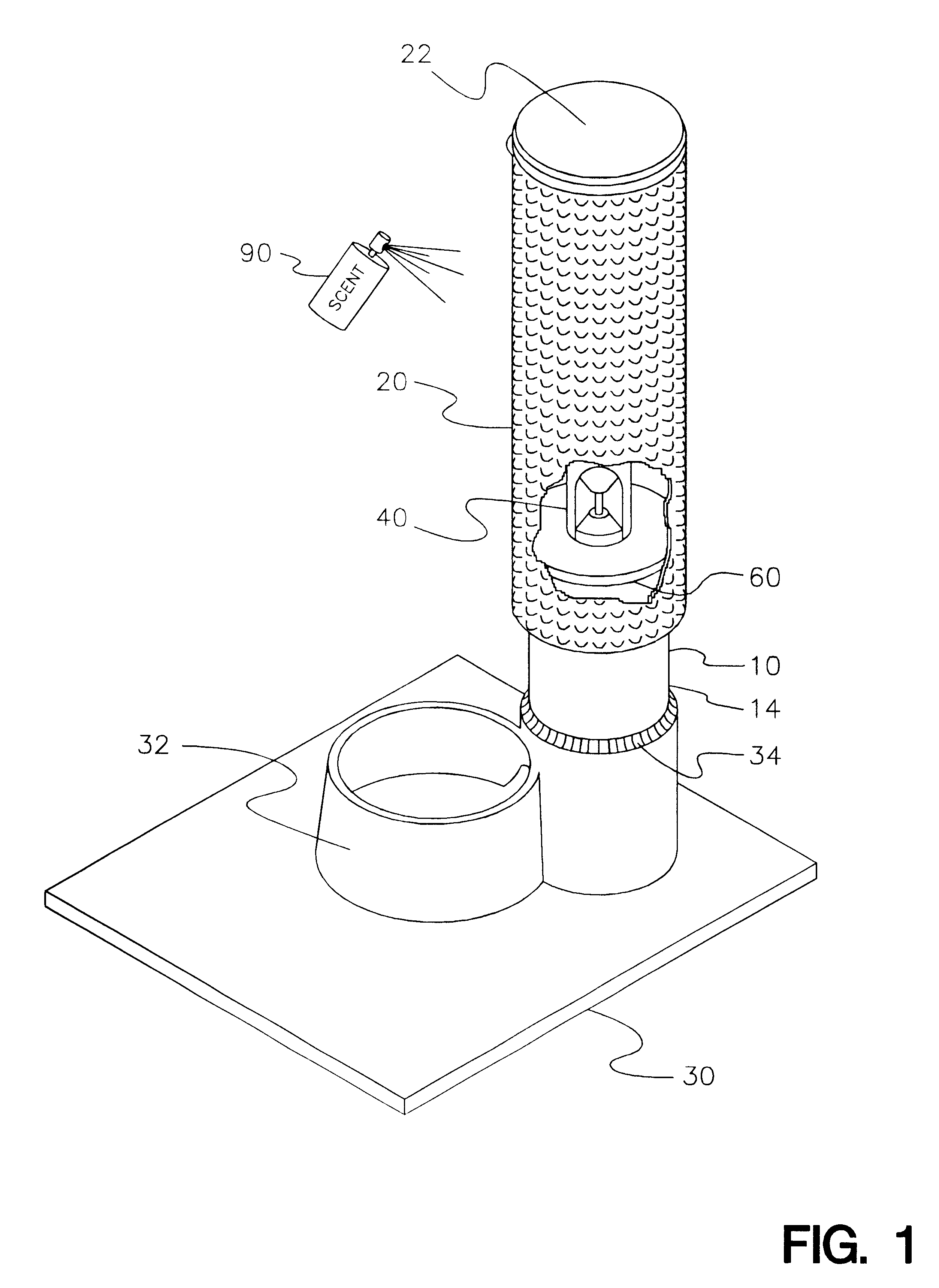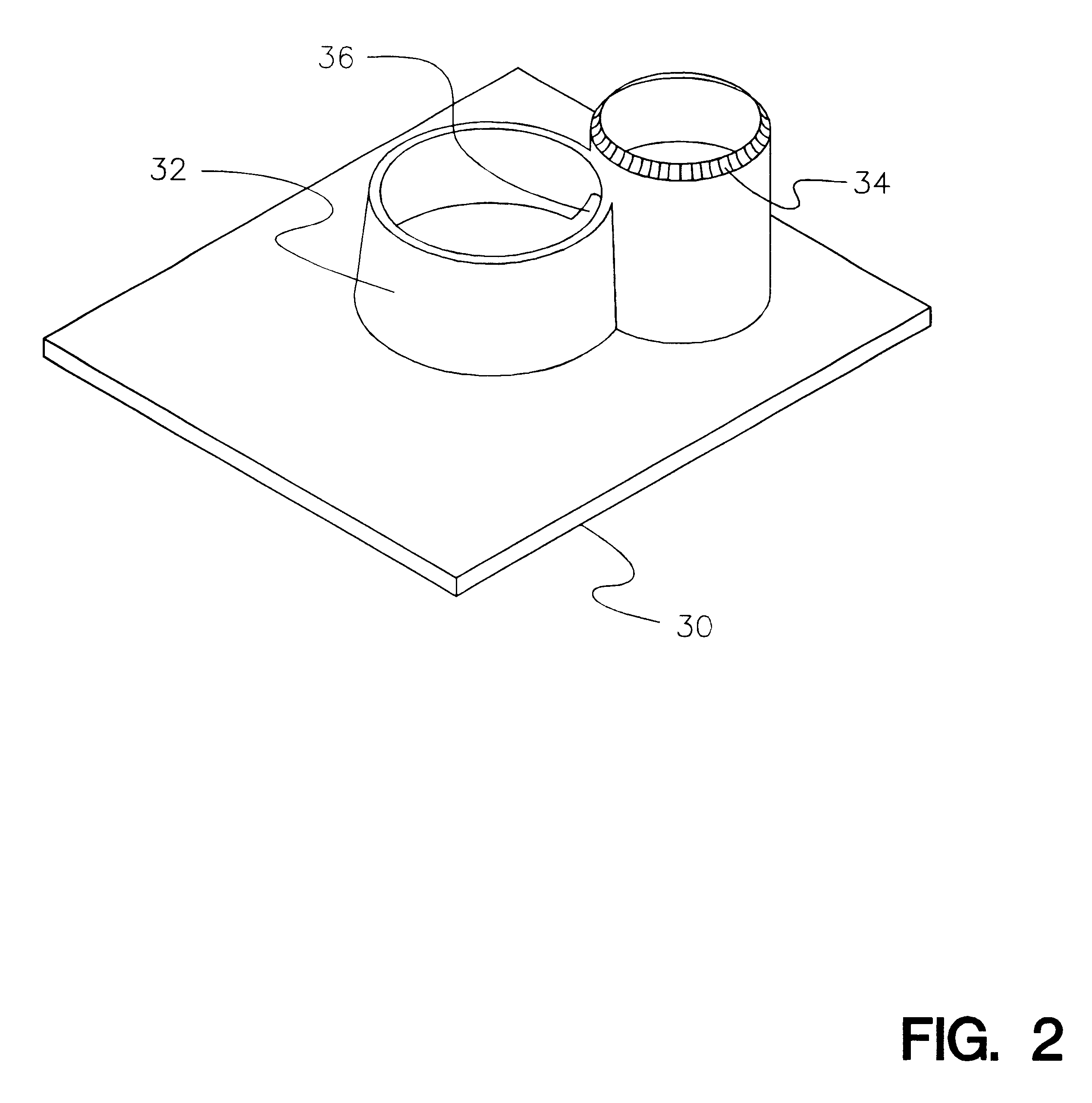Dry particulate food dispenser
a technology of particulate matter and food dispenser, which is applied in the field of dry particulate matter dispensers, can solve the problems of reducing overall reliability, denying, teaching, and claiming any element that provides food to the cat, and reducing the reliability of the overall system
- Summary
- Abstract
- Description
- Claims
- Application Information
AI Technical Summary
Problems solved by technology
Method used
Image
Examples
Embodiment Construction
FIG. 1 shows an external view of the dispenser with a cut-away view showing an internal valve assembly 40. A base 30, with an integral bowl 32, has a support structure 34, to support a food hopper 10. Co-axially located around the food hopper 10, is a scratching surface 20. The scratching surface 20 is suspended from the food hopper 10, by elastic bands (not shown). Internal to the food hopper 10, Is a valve assembly 40, which prevents the dry particulate food in the upper part of the food hopper 10, from exiting the dispensing end 14 at the lower part of the food hopper 10.
FIG. 2 shows a more detailed view of the base 30. The base 30 includes a bowl 32, and a support structure 34. A channel 36 connects the support structure 34 to the bowl 32. In the preferred embodiment, the base 30, is made of any of a number of types of durable, rigid, plastic. Examples of suitable plastics include, but are not limited to poly vinyl chloride, poly propylene, and poly ethylene. The base is formed ...
PUM
 Login to View More
Login to View More Abstract
Description
Claims
Application Information
 Login to View More
Login to View More - R&D
- Intellectual Property
- Life Sciences
- Materials
- Tech Scout
- Unparalleled Data Quality
- Higher Quality Content
- 60% Fewer Hallucinations
Browse by: Latest US Patents, China's latest patents, Technical Efficacy Thesaurus, Application Domain, Technology Topic, Popular Technical Reports.
© 2025 PatSnap. All rights reserved.Legal|Privacy policy|Modern Slavery Act Transparency Statement|Sitemap|About US| Contact US: help@patsnap.com



